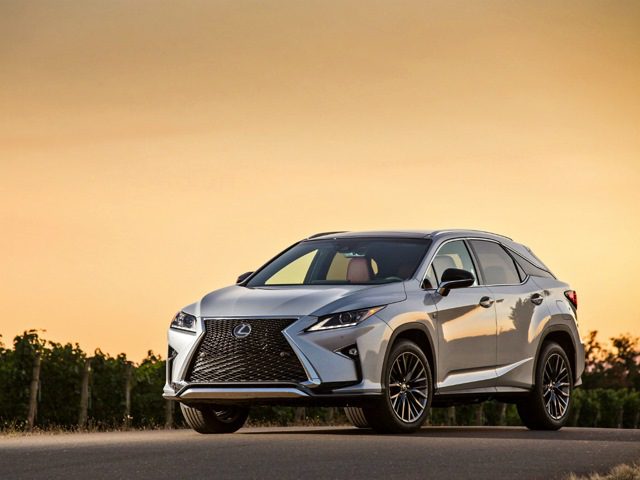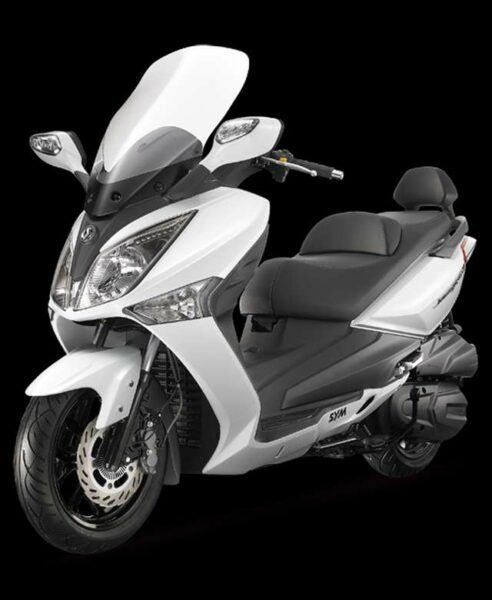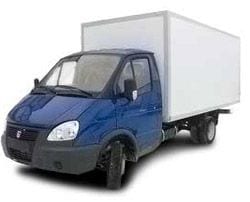
Lexus RX 450h F-Sport Premium
Content
Lexus RX and Mercedes ML co-founded the premium large SUV class in the second half of the XNUMXs in the US and elsewhere. If at the time the RX was rather inconspicuous and indistinct in design, now this has changed quite a lot in its fourth generation. The new RX immediately catches the eye, but not everyone necessarily likes its shape, so it divides tastes or customers. But that is, after all, the intention of the Lexus designers, as they were challenged by this premium branch of Japanese Toyota to take a more aggressive approach to the market. Two people are to blame, sales figures have declined in recent years as rivals have become more determined, and Akio Toyoda, the third generation of the company's founders, has taken over the reins of the entire company, making Toyota much more aggressive than before. . The RX is Lexus' best-selling model, so special care must be taken when repairing. At the same time, the model, which is a kind of hybrid icon in the US along with the Prius, was mass-produced in its class, which cannot be ignored.
So, this is a general description of the RX, and ours was equipped with almost everything a buyer can choose. That is, as a hybrid that carries the 450h mark with it, and as the richest version, that is, the F Sport Premium. The label is a little misleading as there is nothing more sporty than the basic equipment version (Finesse) of this RX. Thus, the power plant is the most powerful version, and the petrol V6 is assisted by two electric motors. The total power of 313 "horses" is eloquent, and the characteristics are typically hybrid. When accelerating, the engine beeps in a different way, of course, completely continuously. This is also influenced by the design that combines the power of the petrol V6 and the front electric motor, which is found in the continuously variable transmission. But such a voice is definitely less annoying than in the Prius, because the engine is quieter and the soundproofing of the body is more efficient. The combination is suitable for normal use.
It turns out, however, that the RX is made primarily for American taste. The selection of the driving mode via the rotary knob next to the "classic" gear lever is carried out in a whole four levels (ECO, customizable, sport and sport +). The adaptation affects the operation of the transmission, chassis and air conditioning. However, there are no major differences in driving behavior between the individual driving programs, and it seems that when the ECO driving profile is selected, the average consumption is slightly lower. Of course, with the gear lever you can also choose between the normal gearshift mode and the S program to "intervene" with the continuously variable transmission, we also have two gearshift eyes under the steering wheel. Even with such interventions, you will not achieve a more noticeable change in the characteristics of the transmission. Here the Japanese are certainly of the opinion that users are not looking for other settings anyway, since they just bought a car with an automatic transmission. The only question is why then there are options for different programs. But that is another story. This time the weather went to meet us during testing. The snow also made it possible to test the performance in winter conditions in the first few days.
Although the RX is designed as an all-wheel drive vehicle, under normal conditions all power is sent to the front wheels only. Only slippery ground under the rear section causes the (electrical) drive to be connected to the rear section, of course fully automatically, depending on the situation. The behavior on the snowy road was exactly what you'd expect from an all-wheel-drive car, even pulling off slippery surfaces goes well. The handling of this large SUV is pretty solid, but it's true that nothing about the Lexus RX encourages us to take on some kind of sport-racing adventure on twisty roads. Everything seems to be ideal for a quiet ride. The RX certainly stands out from its competitors. That's not only true when comparing the 450h to those that, unlike Lexus' hybrid powertrains, offer turbo diesel engines. First of all, I was surprised that, especially when driving around the city, it often happens that only the electric drive works. But this is a combined ride, and the driver has the feeling that the whole system allows the batteries to be quickly recharged while on the move.
However, if you switch to an exclusively electric drive, then this mode will quickly end. There is more “bad mile” going on and you have to be very careful with the accelerator pedal. However, such a combined city driving (automatic switching of the drive of electric gasoline engines) in our range of standards turned out to be very economical. However, when driving on motorways and at the maximum permissible speed, it is much more difficult to save money. This is one of the reasons the Lexus RX feels a little weak in these conditions, even with factory measures that have a top speed of 200 kilometers per hour. Now that competitors are already offering hybrid models (in fact, they are all plug-in hybrids), a new question arises as to how long a Lexus Toyota owner will still insist on conventional hybrids. Our experience with plugins seems to be such that even here the Lexus RX 450h is at a disadvantage compared to its newer competitors.
In terms of equipment and usability, Lexus offers a completely different shopping experience than regular premium car buyers in general. In their price list, everything that can be obtained is summarized in various equipment packages, there are almost no accessories. In a sense, this is also understandable, because cars come to us from Japan and an individual choice will further extend the waiting time for the selected cars. There are only a few additional items, we count them on the fingers of one hand. While the interior feel is very pleasant, it should be noted, however, that Lexus engineers and designers have taken an unusual path in some areas. Despite the nobility of the interior, it surprises with several cheap plastic details. While all functions are still manageable, the Lexus cannot be separated from the button, which acts as a mouse for infotainment and informational menus. Compared to the rotary knob, it is, of course, much less accurate, which is practically unacceptable. The RX's list of electronic assistants for safe and comfortable driving is also quite long and comprehensive.
Automatic Active Brake Assist and Obstacle Sensing (PSC), Lane Departure Warning (LDA), Traffic Sign Recognition (RSA), Progressive Electric Steering (EPS), Adaptive Suspension (AVS), Sound Generator, all in one vehicle location (blind spot detection for approaching vehicles when reversing, reversing camera, 360-degree surveillance cameras, parking sensors) and active radar cruise control (DRCC) are the most important elements. However, it is with regard to the latter that we have to reiterate that Lexus engineers (eg Toyota) are very stubborn to have their cruise control keep the car at a constant speed of less than 40 kilometers per hour. The Lexus RX is slightly different, although it is active and can be driven by columns already semi-automatically, as it maintains a safe distance in front of the vehicle in front of us. True, up to a minimum speed of 40 kilometers per hour, but we can only turn it on at 46.
Therefore, it is almost impossible to manage by adjusting the speed in cities using cruise control. Unfathomable, especially given experience with many other car brands, even if safety is considered the number one reason for Lexus' tenacity. The RX 450h is a car that cannot be separated from each other just because of its appearance. It is similar in terms of ease of use. If you are looking for only a comfortable car that differs in some parameters, or rather in the transmission, then it will suit you. You sit in it and after the first few adjustments do not change anything else in the car? Then this is probably the right choice. But this is almost certainly not for those who, in addition to deducting the right amount of money for their car, also promise useful and efficient accessories, actively changing the settings or, of course, where it is allowed to reach higher speeds.
Tomaž Porekar, photo: Saša Kapetanovič
Lexus RX 450h F-Sport Premium
Basic data
| Sales: | Toyota Adria Ltd. |
|---|---|
| Base model price: | 91.200 € |
| Test model cost: | 94.300 € |
| Power: | 230kW (313 KM) |
| Acceleration (0-100 km / h): | 9,4 with |
| Maximum speed: | 200 km / h |
| Mixed flow ECE: | 7,6l / 100km |
| Guarantee: | 3 years or 100.000 km general warranty, 5 years or 100.000 km hybrid drive element warranty, mobile warranty. |
| Systematic review | At 15.000 km. km |
Cost (up to 100.000 km or five years)
| Regular services, works, materials: | 2.232 € |
|---|---|
| Fuel: | 8.808 € |
| Tires (1) | 2.232 € |
| Loss of value (within 5 years): | 25.297 € |
| Compulsory insurance: | 3.960 € |
| CASCO INSURANCE (+ B, K), AO, AO + | 12.257 ( |
| Calculate the cost of auto insurance | |
| Buy up | € 54.786 0,55 (km cost: XNUMX) €) |
Technical information
| engine: | 6-cylinder - 4-stroke - V6 - petrol - longitudinally mounted in front - bore and stroke 94,0 × 83,0 mm - displacement 3.456 cm3 - compression 11,8:1 - maximum power 193 kW (262 hp) .) at 6.000 rpm - average piston speed at maximum power 16,6 m / s - specific power 55,8 kW / l (75,9 hp / l) - maximum torque 335 Nm at 4.600 rpm min - 2 camshafts in the head (timing belt)) - 4 valves per cylinder - fuel injection into the intake manifold. Electric motor: front - maximum power 123 kW (167 hp), maximum torque 335 Nm - rear - maximum output 50 kW (68 hp), maximum torque 139 Nm. System: maximum power 230 kW (313 hp), maximum torque, for example Battery: Ni-MH, 1,87 kWh |
|---|---|
| Energy transfer: | engine drives all four wheels – CVT continuously variable transmission – 3,137 gear ratio – 2,478 engine ratio – 3,137 front differential, 6,859 rear differential – 9 J × 20 rims – 235/55 R 20 V tires, rolling range 2,31 m. |
| Capacity: | 200 km/h top speed - 0-100 km/h acceleration 7,7 s - Combined average fuel consumption (ECE) 5,2 l/100 km, CO2 emissions 120 g/km - Electric range (ECE) 1,9 km. |
| Transportation and suspension: | crossover - 5 doors, 5 seats - self-supporting body - front single suspension, coil springs, three-spoke transverse rails, stabilizer - rear multi-link axle, coil springs, stabilizer - front disc brakes (forced cooling), rear discs (forced cooling), ABS, electric parking brake on the rear wheels (switching between seats) - rack and pinion steering, electric power steering, 2,5 turns between extreme points. |
| Mass: | empty vehicle 2.100 kg - permissible total weight 2.715 kg - permissible trailer weight with brake: 2.000 kg, without brake: 750 - permissible roof load: np |
| External dimensions: | length 4.890 mm – width 1.895 mm, with mirrors 2.180 1.685 mm – height 2.790 mm – wheelbase 1.640 mm – track front 1.630 mm – rear 5,8 mm – ground clearance XNUMX m. |
| Inner dimensions: | longitudinal front 890-1.140 mm, rear 730-980 mm - front width 1.530 mm, rear 1.550 mm - head height front 920-990 mm, rear 900 mm - front seat length 500 mm, rear seat 500 mm - luggage compartment 510 - 1.583 380 l – handlebar diameter 65 mm – fuel tank XNUMX l. |
Our measurements
| Measurement conditions: T = 1 ° C / p = 1.028 mbar / rel. vl. = 77% / Tires: Yokohama W Drive 235/55 R 20 V / Odometer status: 2.555 km | |
| Acceleration 0-100km: | 9,4s |
|---|---|
| 402m from the city: | 16,8 years ( 144 km / h) |
| test consumption: | 8,8 l / 100km |
| Fuel consumption according to the standard scheme: | 7,6 l / 100km |
| Braking distance at 130 km / h: | 74,3m |
| Braking distance at 100 km / h: | 46,3m |
| AM table: | 40m |
| Noise at 90 km / h in 6rd gear | 57dB |
Overall rating (356/420)
Lexus is probably counting on customers who think differently, as do most people who choose such large SUVs in Europe.
Exterior (14/15)
Definitely an interesting and unique image that you quickly get used to.
Interior (109/140)
A combination of some commendable and other less commendable things. Comfortable seating, but flimsy dashboard design. Plenty of room for passengers, less convincing trunk.
Engine, transmission (58
/ 40)They were surprised by their locomotion in the snow. Although it has no air springs and only adjustable dampers, the comfort is satisfactory.
Driving performance (57
/ 95)In terms of handling, it does not lag behind competitors, but I would like more convincing behavior when braking.
Performance (30/35)
The Japanese and Americans do not appreciate top speed, so Lexus limits it to 200 mph.
Security (43/45)
Unfortunately, it is not possible to use active cruise control when driving around town.
Economy (45/50)
The hybrid drive can only provide better fuel economy when driving around town, and for price, Lexus is already struggling to dominate the competition.
We praise and reproach
seats, position, ergonomics (except, see below)
electric drive
open space
fuel consumption when driving in the city
fuel consumption when driving on the highway
loss of memory of all settings when stopped
mouse to scroll through the infotainment system menus
drive range
rather high seats
limited trunk due to batteries underneath

